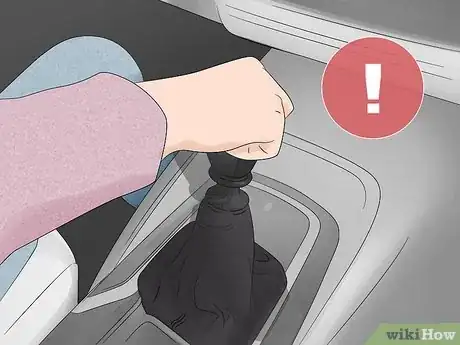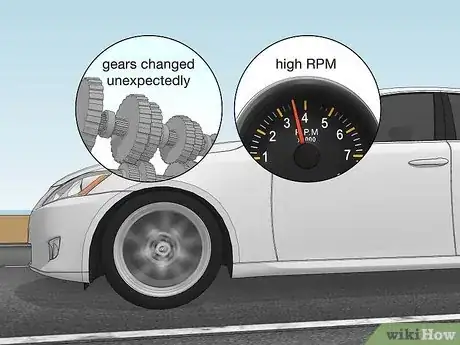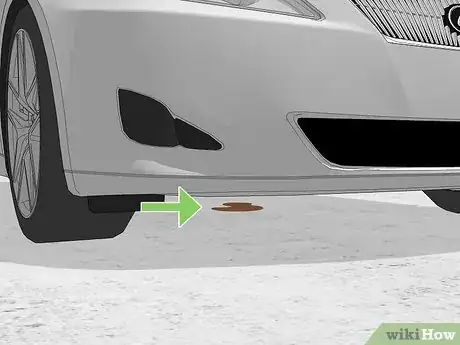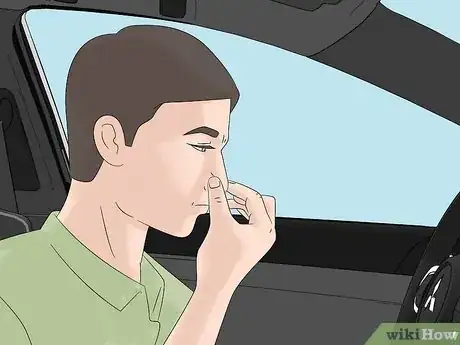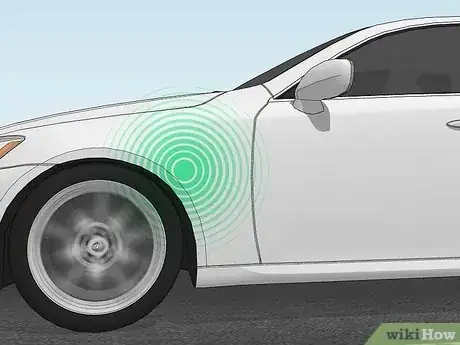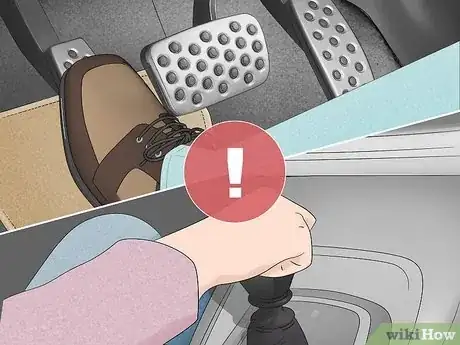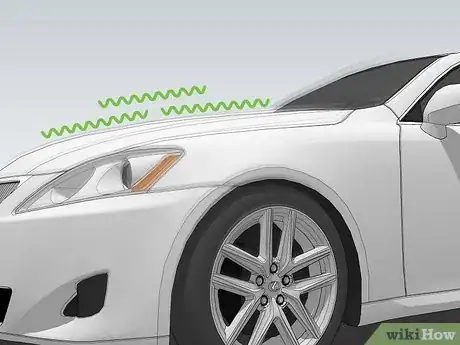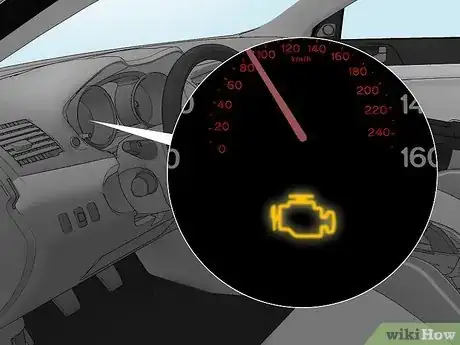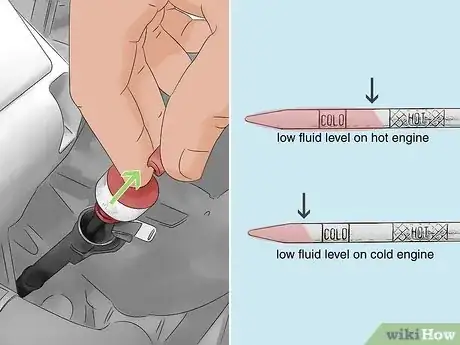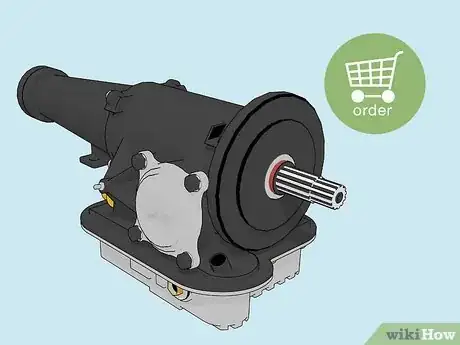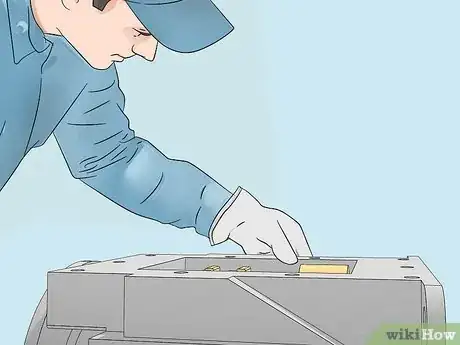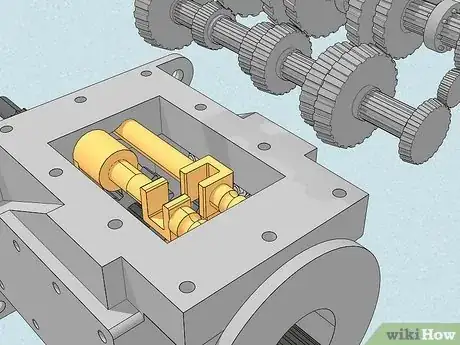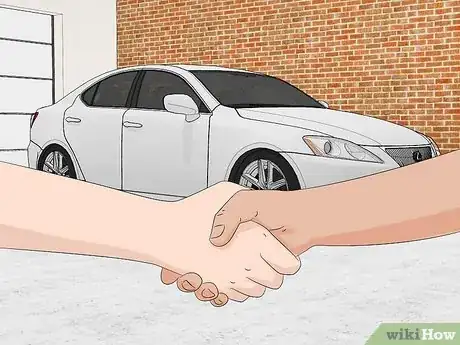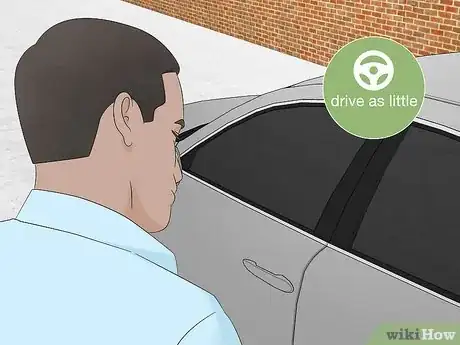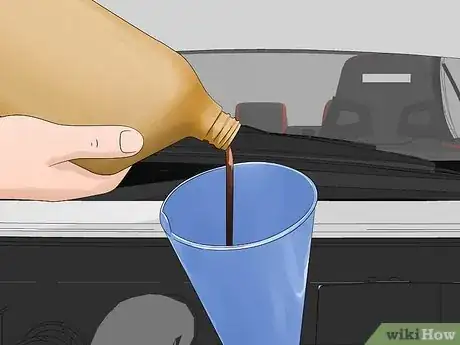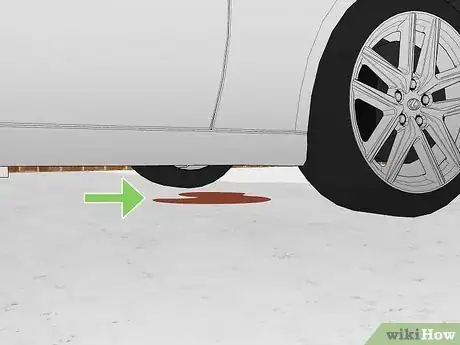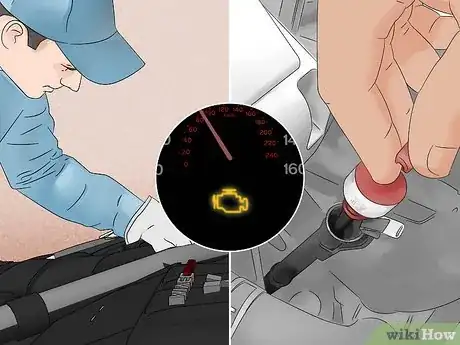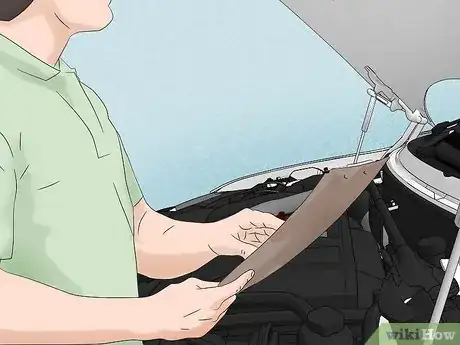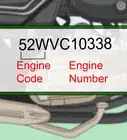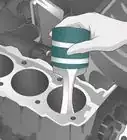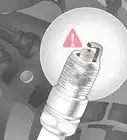This article was co-authored by Ed Beery and by wikiHow staff writer, Dan Hickey. Ed Beery is an Automotive Specialist and the Owner of InTechgrity Automotive Excellence based in Denver, Colorado. With more than eight years of experience, he specializes in providing maintenance and repair services for both individuals and companies. Ed and the InTechgrity Automotive Excellence Team are approved by the American Automobile Association (AAA) for repairs and are Automotive Service Excellence (ASE) certified.
There are 10 references cited in this article, which can be found at the bottom of the page.
Every vehicle has its quirks—a little squeaking here, the occasional soft thud there. Sometimes, though, these little noises and shudders can be early warning signs of some serious (and expensive) problems, including issues with your transmission. The transmission is the mechanism that transfers power from your engine to your wheels, so you can understand why keeping it in good shape is important! In this article, we’ll show you the warning signs of a bad transmission, what options you have to get it repaired or replaced, and how to catch a declining transmission before it completely fails you. Buckle up and let’s get started!
Things You Should Know
- Look for common symptoms of a bad transmission like gears that slip or don’t switch, leaking transmission fluid, a burning smell, or shaking and jerking.
- Check and refill transmission fluid yourself or take your vehicle to a mechanic as soon as possible for all other transmission-related issues.
- Drive only when absolutely necessary if you have a bad transmission. Unreliable gear switching or failure can lead to costly and dangerous accidents.
- Catch a bad transmission early by replacing the fluid regularly, checking for leaks, and taking your vehicle in for routine maintenance.
Steps
Failing Transmission Symptoms
-
1Gears that don’t switch Your vehicle might struggle to switch between gears, or in severe cases, it might not be able to switch at all. This is a major sign that your transmission system is bad (and may have had unnoticed issues for a while leading up to now).[1] X Research source
- The likely diagnosis: Low transmission fluid or the wrong kind of fluid is usually the cause for stubborn gears. There might also be excessive line pressure due to a clog or malfunctioning transmission shift solenoid.
-
2Slipping gears A slipping transmission can mean several things—your car or truck may change gears unexpectedly, stop accelerating the way it should, or be unable to change gears quickly or smoothly. Another indicator is very high engine RPMs over 3,500.[2] X Research source Your car may also slip in and out of gear under load, like going up a hill.
- The likely diagnosis: Extensive mechanical wear has probably worn down a part in your transmission that needs replacing. You may also need new transmission fluid.
Advertisement -
3Leaking transmission fluid Spots of reddish or brownish liquid pooling near the center of the underside of your vehicle indicate a transmission leak. Fluid that’s more red or pink is fresh, while dark brown or black fluid is old and probably needs to be replaced.[3] X Research source
- The likely diagnosis: The pan, output shaft seal, or front pump seal may have worn down from the friction, pressure, and heat generated by your transmission and began leaking.
-
4Burning smell You might notice an acrid odor coming from under the hood or inside the car while you’re driving. A burning smell is an urgent warning sign of transmission failure—visit an auto shop right away.[4] X Research source
- The likely diagnosis: Your transmission is overheating due to a problem with your engine coolant or your transmission fluid is too old and filled with debris.
-
5Strange noises coming from the transmission You might hear new or unpleasant sounds coming from the transmission, even if it’s in neutral. The noises might sound like humming, buzzing, or whining noise if you have an automatic transmission, or a more aggressive clunking sound for manual transmissions.[5] X Research source
- The likely diagnosis: In the best case scenario, your transmission simply needs new fluid. In the worst case, there could be mechanical wear that needs costly repair or even a full transmission replacement.
-
6Dragging clutch The clutch is a mechanism that engages the transmission to transfer power from the engine to the vehicle’s wheels. Signs of clutch drag include hard starting, hard shifting or jerking while shifting, or the vehicle moving while starting.[6] X Research source
- The likely diagnosis: The clutch is failing to disengage from the flywheel due to mechanical wear or damage.
- Both manual and automatic transmission have a clutch, but automatic transmission vehicles rarely have a clutch pedal.
-
7Grinding or shaking Your vehicle might begin to shake, tremble, or jerk if your transmission is worn out. These issues get worse over time as the damage progresses. If you have a manual transmission, you might also feel and hear the gears grinding together as you change gears or drive.[7] X Research source
- The likely diagnosis: Your transmission has severely slipping gears, low transmission fluid, or has been worn out. Shaking or trembling usually follows the gears struggling to switch.
-
8Illuminated check engine light If your vehicle’s transmission control module (TCM) sensor detects any problem with your transmission, it will trigger the check engine light to turn on. The “reduced power” emblem may also light up, and your vehicle may enter “limp home mode” (an emergency setting where non-essential functions, like air conditioning, are turned off).[8] X Research source
- The likely diagnosis: The check engine light could indicate a problem in any area of your vehicle’s engine, including the transmission. Take your vehicle to a mechanic for a specific diagnosis.
-
9Unresponsive vehicle If your engine is running but your vehicle won’t move, or it only moves in certain gears, then your transmission is most likely to blame. This indicates severe mechanical problems or a massive fluid leak that make the transmission unable to transfer engine power to the wheels.[9] X Research source
- The likely diagnosis: Your transmission has failed completely or is close to failing. It will probably need massive repairs or a full replacement.
Repair & Replacement Options
-
1Check the transmission fluid to try to diagnose the problem. Park the vehicle on a level surface and idle the engine. Then, prop the hood and look for the transmission dipstick (it'll have a transmission label on it and be further back than the engine-oil dipstick). Pull the dipstick out of the transmission, wipe it clean, then slowly replace it. Pull it out again and look at how high the fluid clings to the stick. The stick probably has “full,” “low,” and “fill” marks.[10] X Research source
- If needed, add more transmission fluid. Check your owner’s manual for specific instructions, amounts, and the correct type of fluid.
- Low fluid levels indicate there’s a leak somewhere. Confirm this by looking under your vehicle for drops or pools of reddish-brown liquid.
- If the fluid is reddish-pink, it’s in good condition. Brownish-red, dark brown, or black fluid indicate mechanical problems or old fluid that needs replacing.
- Not all vehicles have a transmission dipstick. Newer cars have fully sealed transmissions with fluid meant to last the lifetime of the vehicle.
- Topping off the fluid may help transmission issues in the short term, but the cause of the low fluid should be addressed by a specialist.
-
2Bring your vehicle to a mechanic for an official diagnosis and repair. Besides topping off the fluid, transmission work is complicated and best left to professionals. Accessing the transmission usually requires using jacks, ramps, or lifts, as well as a lot of patience and skill that an average DIY-er may not have. Most modern transmissions are also fully sealed and need a dealer’s service computer or other tools to run diagnostics and make repairs.[11] X Trustworthy Source Consumer Reports Nonprofit organization dedicated to consumer advocacy and product testing Go to source
- A mechanic can confirm your hunches or find the underlying problem if you’re not sure what’s plaguing your transmission.
- The auto repair shop will let you know whether they can repair your transmission or if you’ll have to order a replacement.
- Paying for a mechanic is never fun, but getting a professional look-over before you have a major problem can save you hundreds or thousands of dollars.
-
3Order a new or used transmission if the mechanic can’t repair yours. A brand new transmission will certainly fix your problems, but they’re quite expensive (parts and labor can easily add up to $4,000 or more). To save money, go with a high-quality, used transmission. Your auto repair shop can find, purchase, and install it for you. They’ll probably add a markup for sourcing the unit and labor, but it’s still cheaper than a new one (the unit itself can be up to $1,600, plus up to $800 for fluid and labor).[12] X Research source
- Alternatively, source your own used transmission from a local junkyard or online and ship it to your auto shop for installation. This is even more affordable, but slightly riskier since the shop likely won’t offer a warranty for transmissions that aren’t supplied by them.
-
4Have your transmission rebuilt by a reliable, local shop. Your mechanic may recommend a rebuild and direct you to a transmission shop. In this case, an expert will completely disassemble your transmission, clean and inspect every component, and replace worn or damaged parts before rebuilding it. An average rebuild costs $1,500 to $2,500 or more, depending on what was wrong with the transmission.[13] X Research source
- Make sure to use a highly rated, reputable shop for a rebuild since there’s no way to tell whether they did a thorough job or just fixed it up “good enough.”
- The final price for a rebuild could be higher than your initial estimate since the problem may not be discovered until the transmission is taken apart.
-
5Order a remanufactured transmission to make yours “like new.” A remanufactured transmission is disassembled, repaired, and put back together on an assembly line and may even be upgraded to match current factory or manufacturer standards. An auto shop can find, order, and install one for you, but it will be more expensive since they’ll mark up the price. To save money, order one factory direct and ship it to an auto shop willing to install it for you.[14] X Research source
- The process will go faster if a shop coordinates it for you, but may cost up to $3,500.
- Ordering factory direct will take longer since you have to find a shop willing to install a transmission they didn’t source, but you’ll save up to $900 in markups.
- Some dealerships offer to coordinate remanufactured transmission installations too, but this is frequently the most expensive option (up to $2,800 just for the transmission, plus labor).
-
6Consider selling your vehicle if the cost of repair is uneconomical. If your vehicle is over 20 years old and has more than 275,000 miles (443,000 km) on it, then repairing or replacing a failed transmission is probably higher than the value of the vehicle itself. In this case, it’s usually not worth getting your car or truck fixed unless it has high sentimental value.[15] X Research source
- You’ve got options if you decide to get rid of your vehicle. Junk it, let it sit, sell it to a dealer for a small amount (up to $1,500), or list it online for repair shops, junkyards, and hobbyists to purchase.
Can I drive with a bad transmission?
-
Drive your vehicle as little as possible if you have transmission trouble. The more you drive with a faulty transmission, the more you risk increasing the damage to the gearbox (which can be costly and dangerous). The risk is especially high if you have resistant or slipping gears—a sudden or delayed gear shift on the road can cause you to lurch forward or lose control of the vehicle, resulting in potentially harmful accidents.[16] X Research source
- Unresolved lurches or surges can also damage the engine as a whole or cause the transmission to fail completely.
Catching a Bad Transmission Early
-
1Change your transmission fluid regularly. Double check how often your owner's manual recommends getting the transmission serviced. Some cars and trucks need fresh fluid after 30,000 miles (48,000 km), while others can go 100,000 miles (160,000 km) or more. Take your car to a mechanic for a fluid change since this is typically beyond DIY maintenance.[17] X Trustworthy Source Consumer Reports Nonprofit organization dedicated to consumer advocacy and product testing Go to source
- There’s no need to change your transmission fluid more often than recommended unless there are other transmission problems that are draining or polluting it.
- Keep in mind that a replacement is different from a power flush, which can dislodge sludge and other particles that can cause clogs (especially for old, high-mileage vehicles).
-
2Check for transmission fluid leaks under your vehicle. Look for drops or pools of a dark, reddish-colored fluid underneath the center of the vehicle that smells similar to gasoline. Take your vehicle to a mechanic ASAP if you spot any transmission fluid and drive as little as possible until it’s evaluated.[18] X Research source
- The leak might be easily patched, or it could be a sign of a much more serious mechanical problem.
-
3Have your vehicle inspected if the check engine light comes on. We’re all guilty of driving with the check engine light on at some point, but it’s there for a reason! If the light is steadily illuminated orange or yellow, it means there isn’t an urgent emergency—just schedule a service appointment soon. A blinking or red light is more serious—reduce power to the vehicle, drive it sparingly, and have it inspected as soon as possible.[19] X Trustworthy Source Consumer Reports Nonprofit organization dedicated to consumer advocacy and product testing Go to source
- It might not be clear exactly what’s triggering the light. Modern cars have computers that store a “trouble code” that’s read by specialized tools at an auto repair shop to find the issue.
-
4Stay up-to-date with your vehicle’s other routine maintenance. Check out your owner’s manual to see how often your car needs oil changes, filter replacements, or other services. By staying on top of maintenance, you’ll limit the number of mechanical factors that might affect your transmission (and every mechanic visit is an opportunity to have your transmission looked at if you suspect an issue, too).[20] X Research source
- Some manufacturers recommend maintenance services after a certain number of miles, while others might suggest tune-ups after specific periods of time (every 6 months, 2 years, etc.).
You Might Also Like
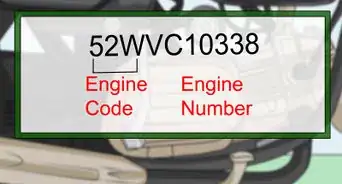
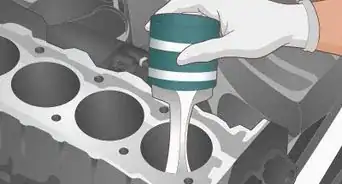 How to Detect and Fix a Misfire: Common Problems, Solutions, & More
How to Detect and Fix a Misfire: Common Problems, Solutions, & More
 How to Reset a Check Engine Light and Clear Error Codes
How to Reset a Check Engine Light and Clear Error Codes
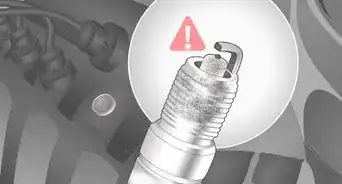 Simple and Easy Ways to Bypass Reduced Engine Power
Simple and Easy Ways to Bypass Reduced Engine Power
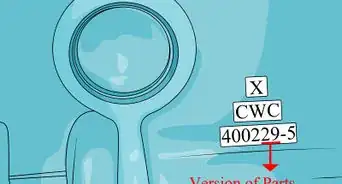
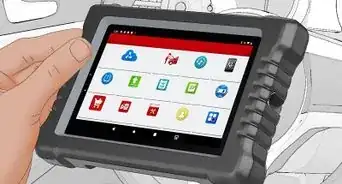
-Step-13.webp)
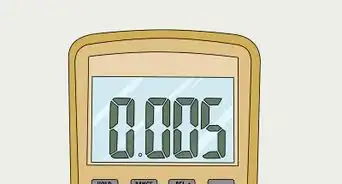
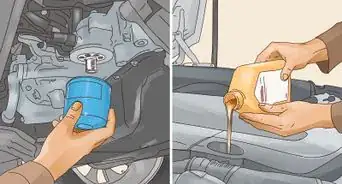
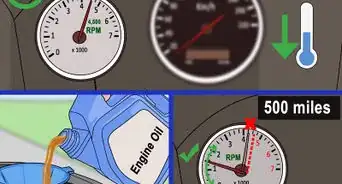
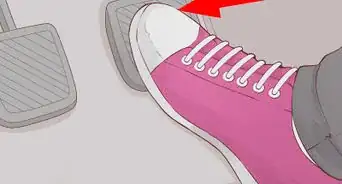
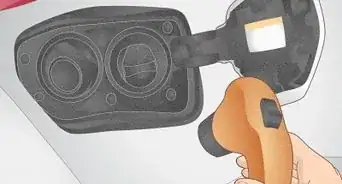
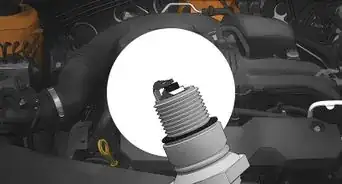 7 Symptoms of a Bad Spark Plug
7 Symptoms of a Bad Spark Plug

References
- ↑ https://www.cashcarsbuyer.com/how-to-tell-if-the-transmission-is-bad/
- ↑ https://www.cashcarsbuyer.com/how-to-tell-if-the-transmission-is-bad/
- ↑ https://repairpal.com/signs-of-transmission-problems-and-why-you-should-act-now
- ↑ https://www.cashcarsbuyer.com/how-to-tell-if-the-transmission-is-bad/
- ↑ https://www.honkforhelp.com/explore/2020/signs-bad-transmission/
- ↑ https://www.cashcarsbuyer.com/how-to-tell-if-the-transmission-is-bad/
- ↑ https://www.honkforhelp.com/explore/2020/signs-bad-transmission/
- ↑ https://repairpal.com/signs-of-transmission-problems-and-why-you-should-act-now
- ↑ https://repairpal.com/signs-of-transmission-problems-and-why-you-should-act-now
- ↑ https://www.caranddriver.com/features/a28200003/transmission-fluid-check/
- ↑ https://www.consumerreports.org/car-repair-maintenance/things-to-know-about-your-car-transmission/
- ↑ https://www.transmissionrepaircostguide.com/transmission-has-failed/
- ↑ https://www.transmissionrepaircostguide.com/transmission-has-failed/
- ↑ https://www.transmissionrepaircostguide.com/transmission-has-failed/
- ↑ https://www.transmissionrepaircostguide.com/transmission-has-failed/
- ↑ https://autotechblackhawk.com/can-you-drive-for-a-long-time-with-a-bad-transmission/
- ↑ https://www.consumerreports.org/car-repair-maintenance/things-to-know-about-your-car-transmission/
- ↑ https://driving-tests.org/beginner-drivers/handle-fluid-leaking-from-car/
- ↑ https://www.consumerreports.org/car-repair-maintenance/what-does-check-engine-light-mean-a2041364753/
- ↑ https://www.mymechanicjoe.com/how-often-should-you-take-your-car-in-for-maintenance/
About This Article

